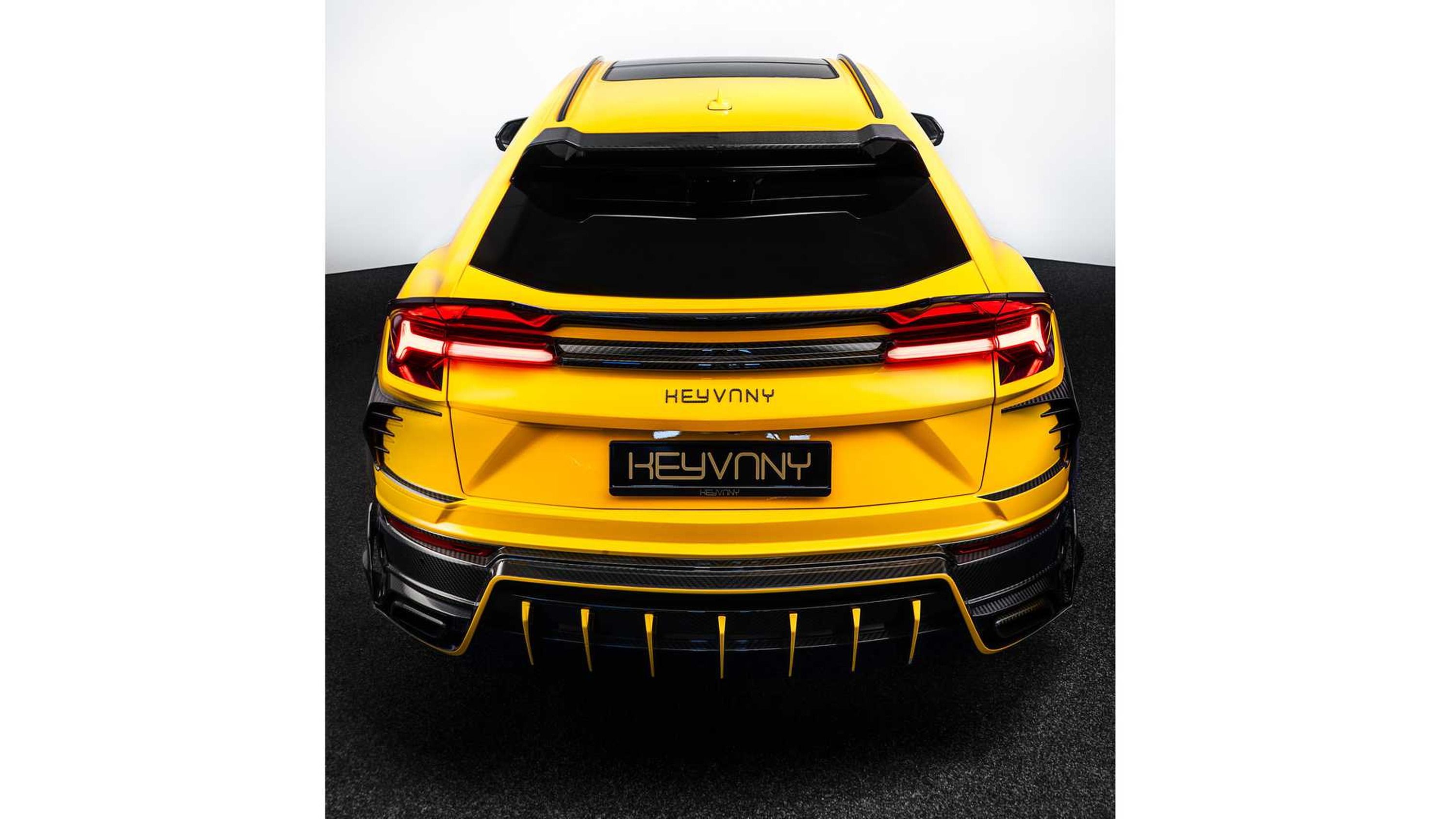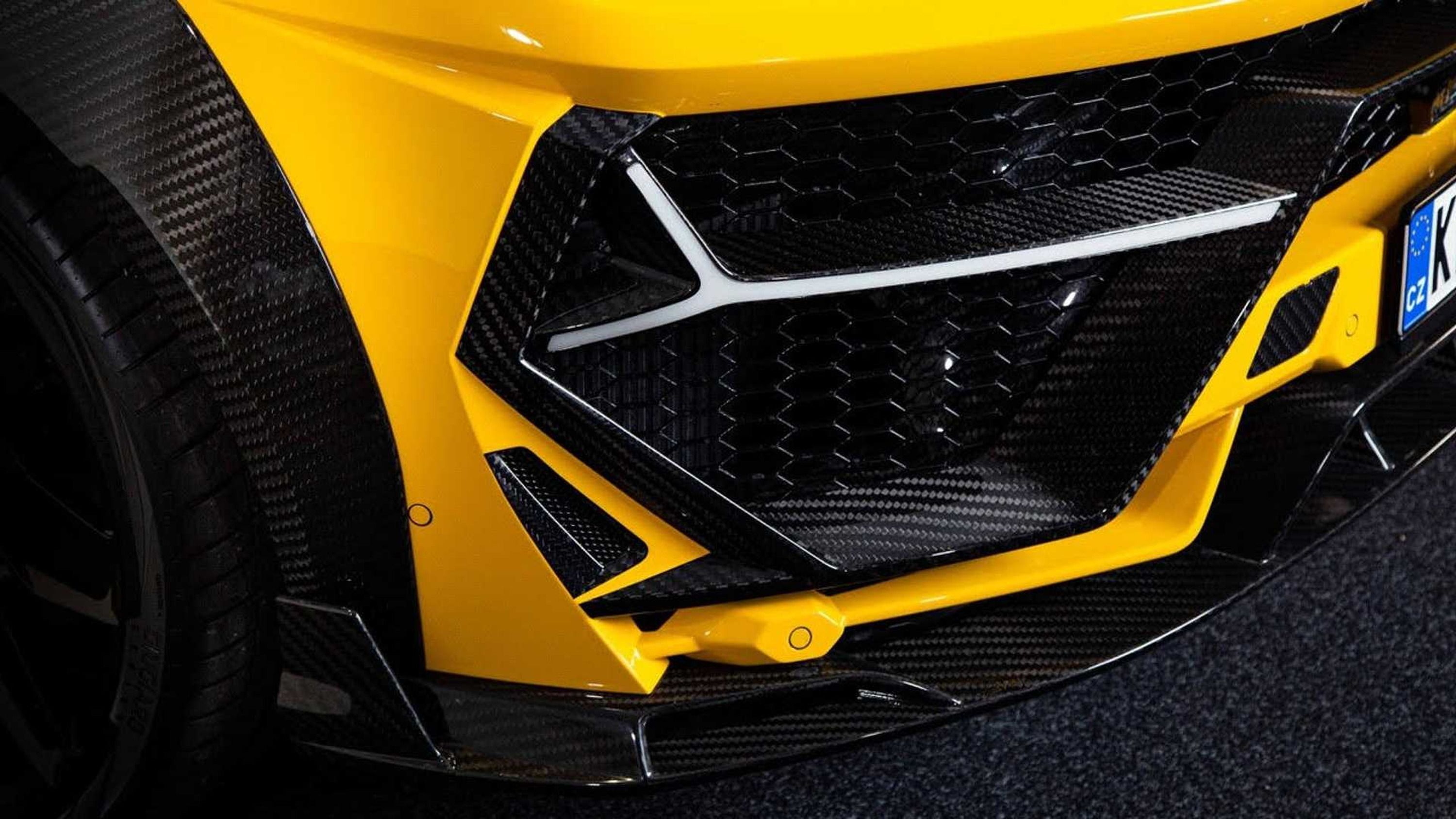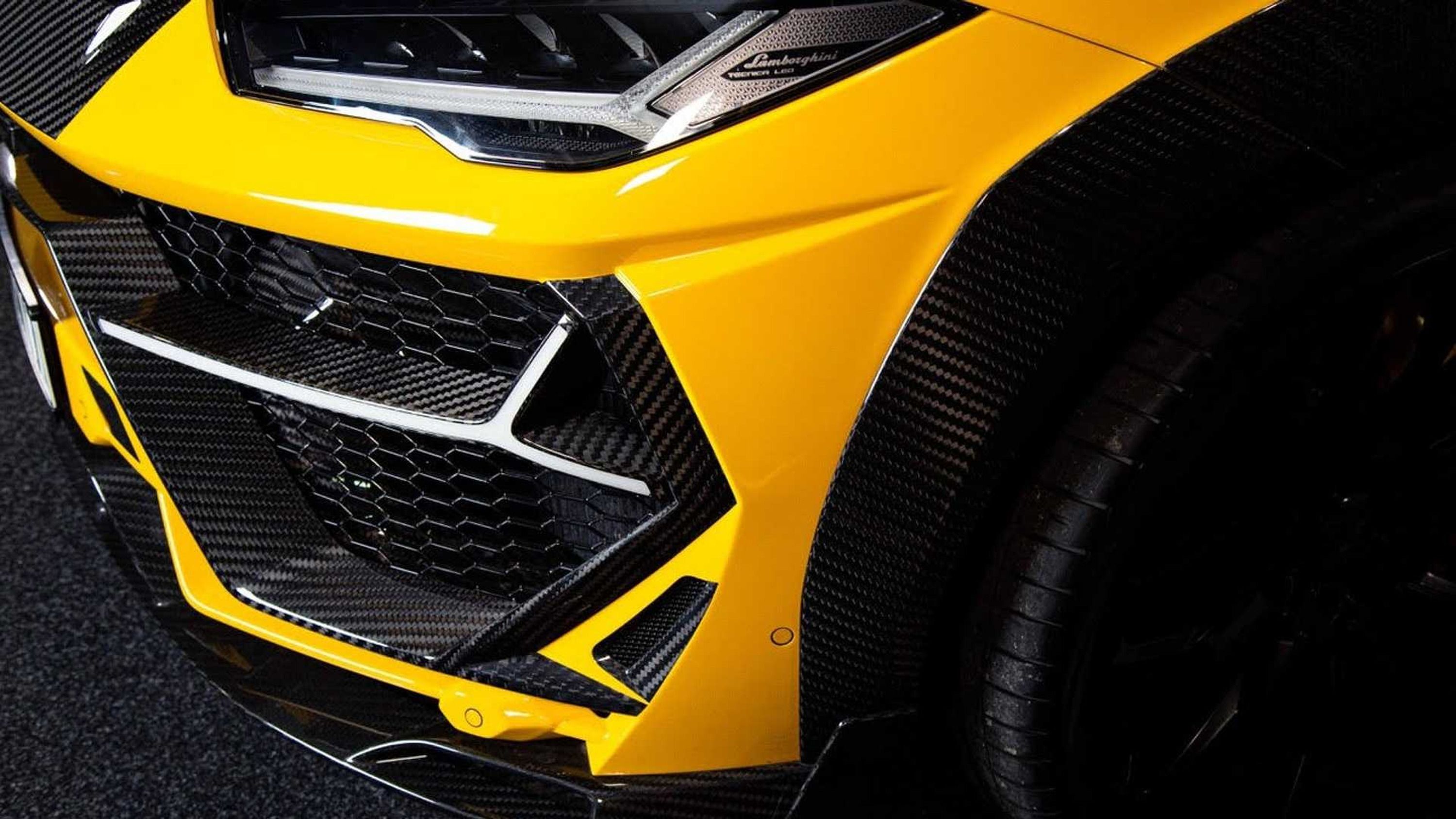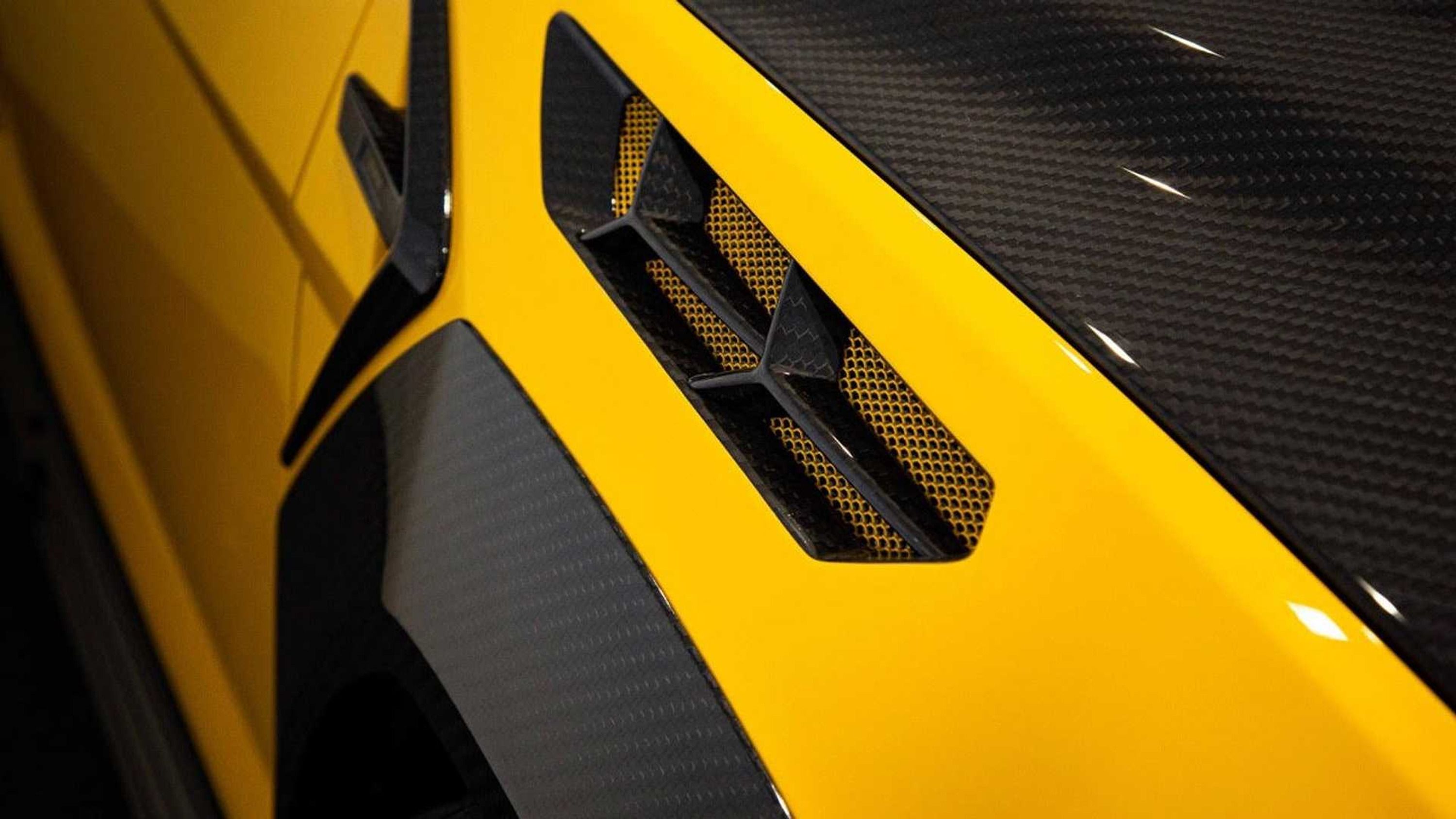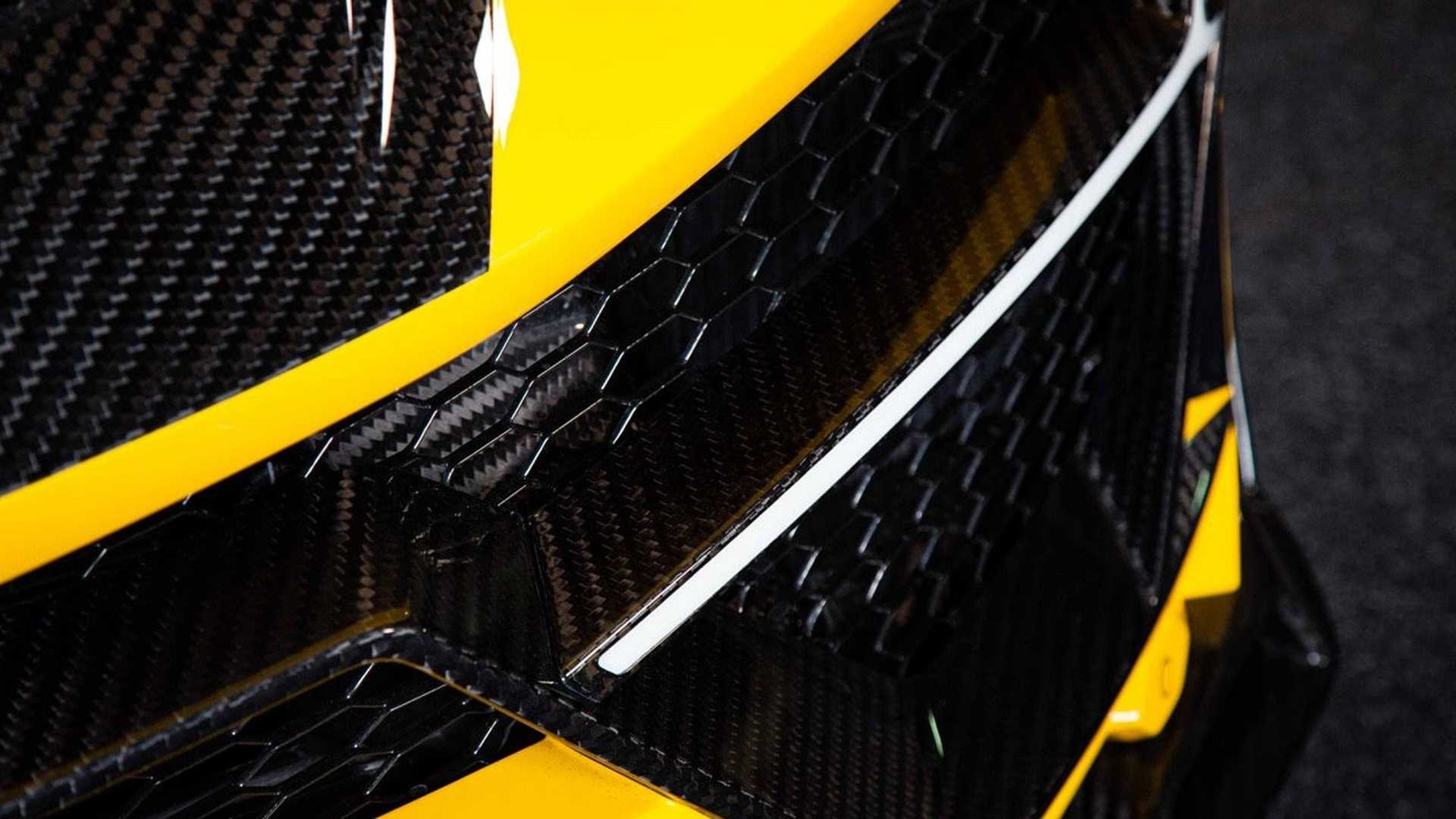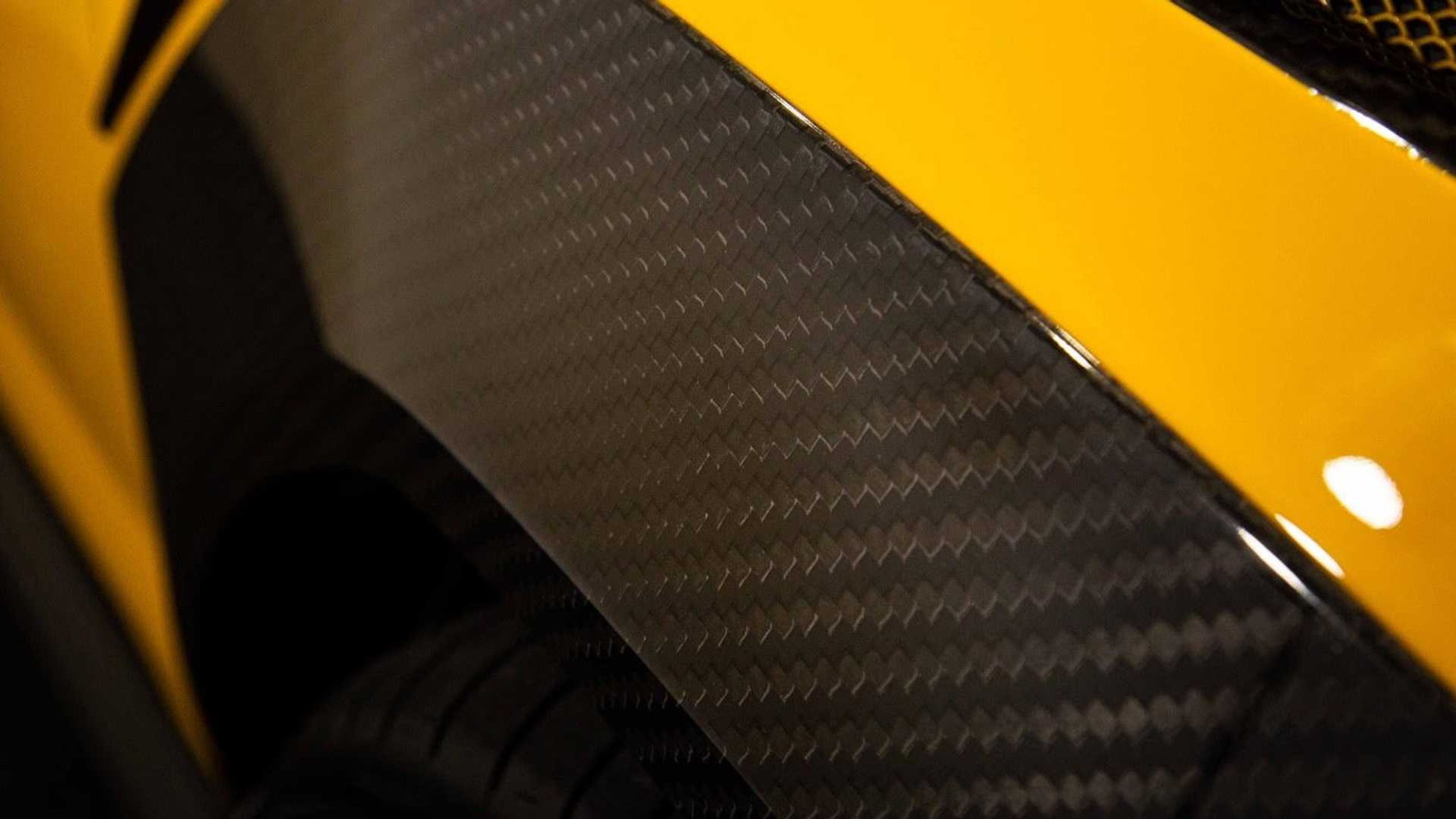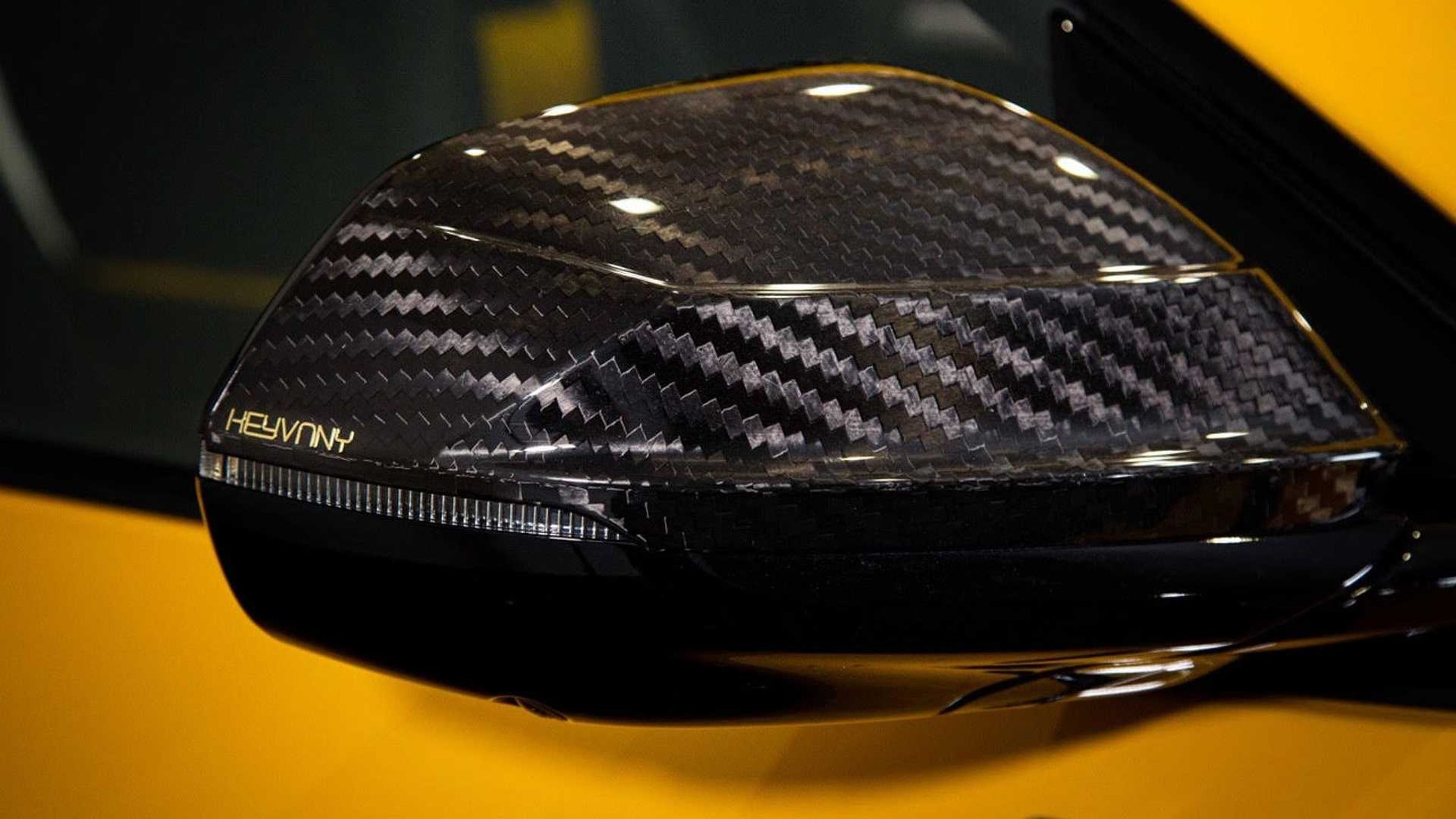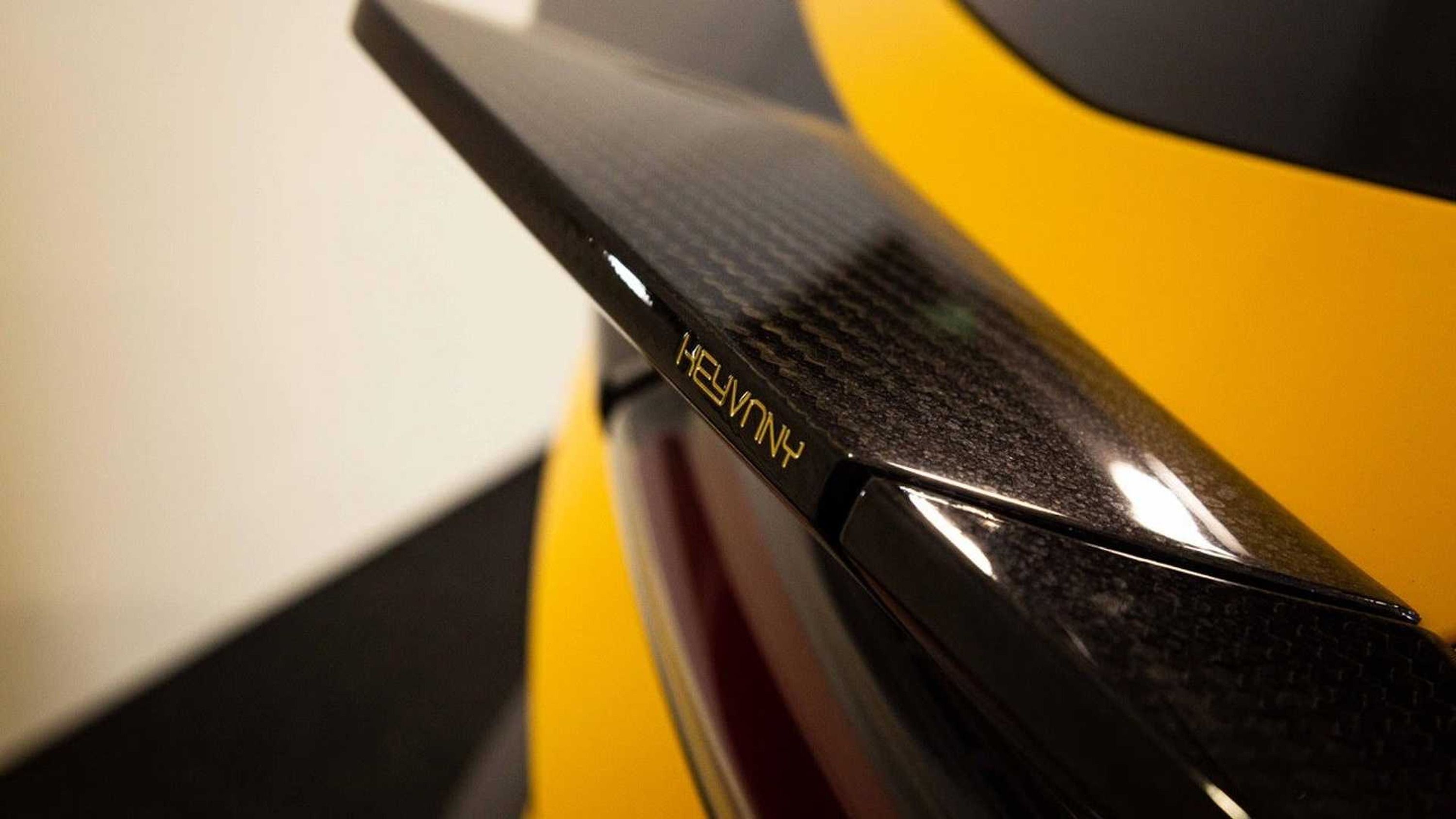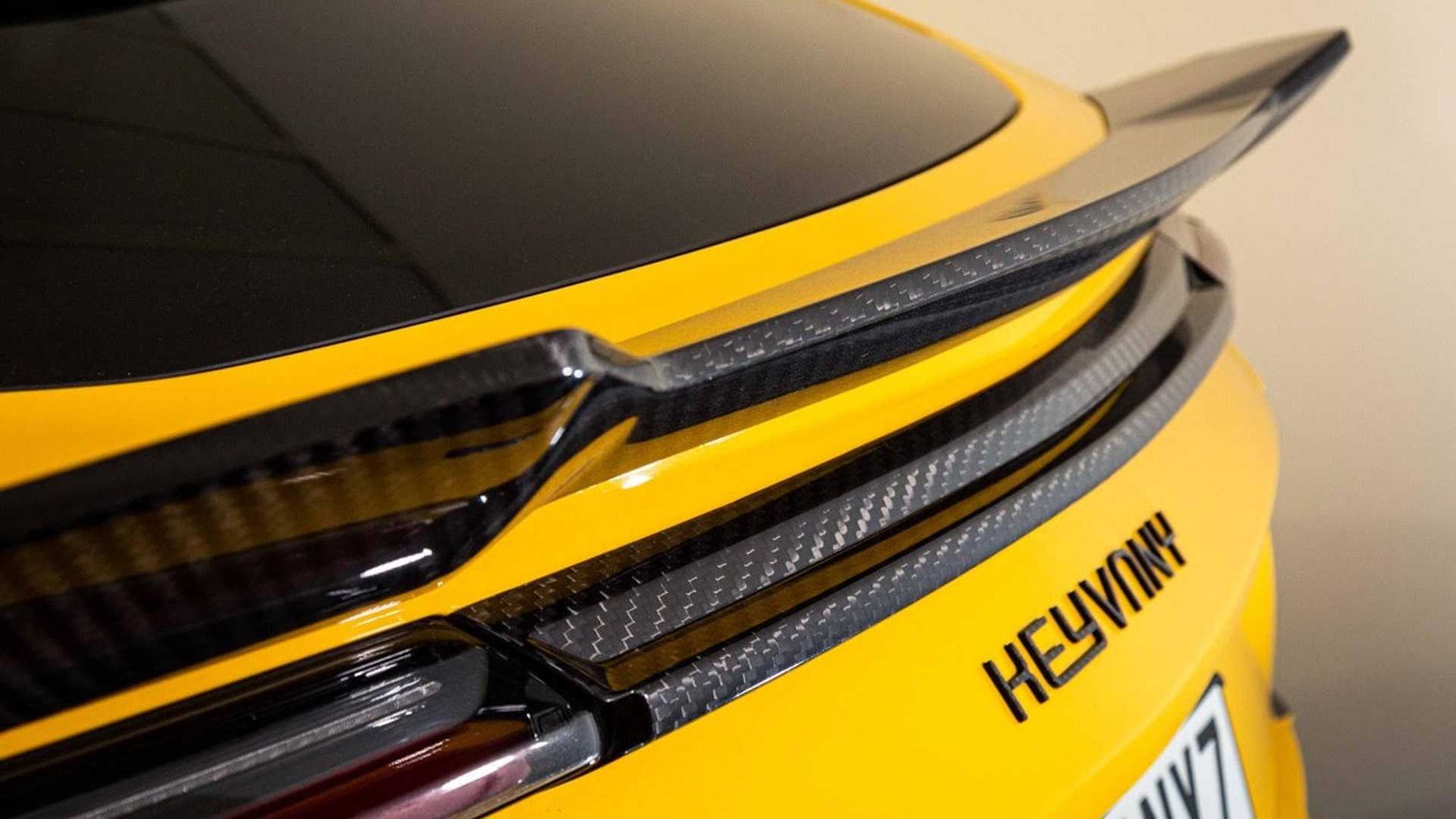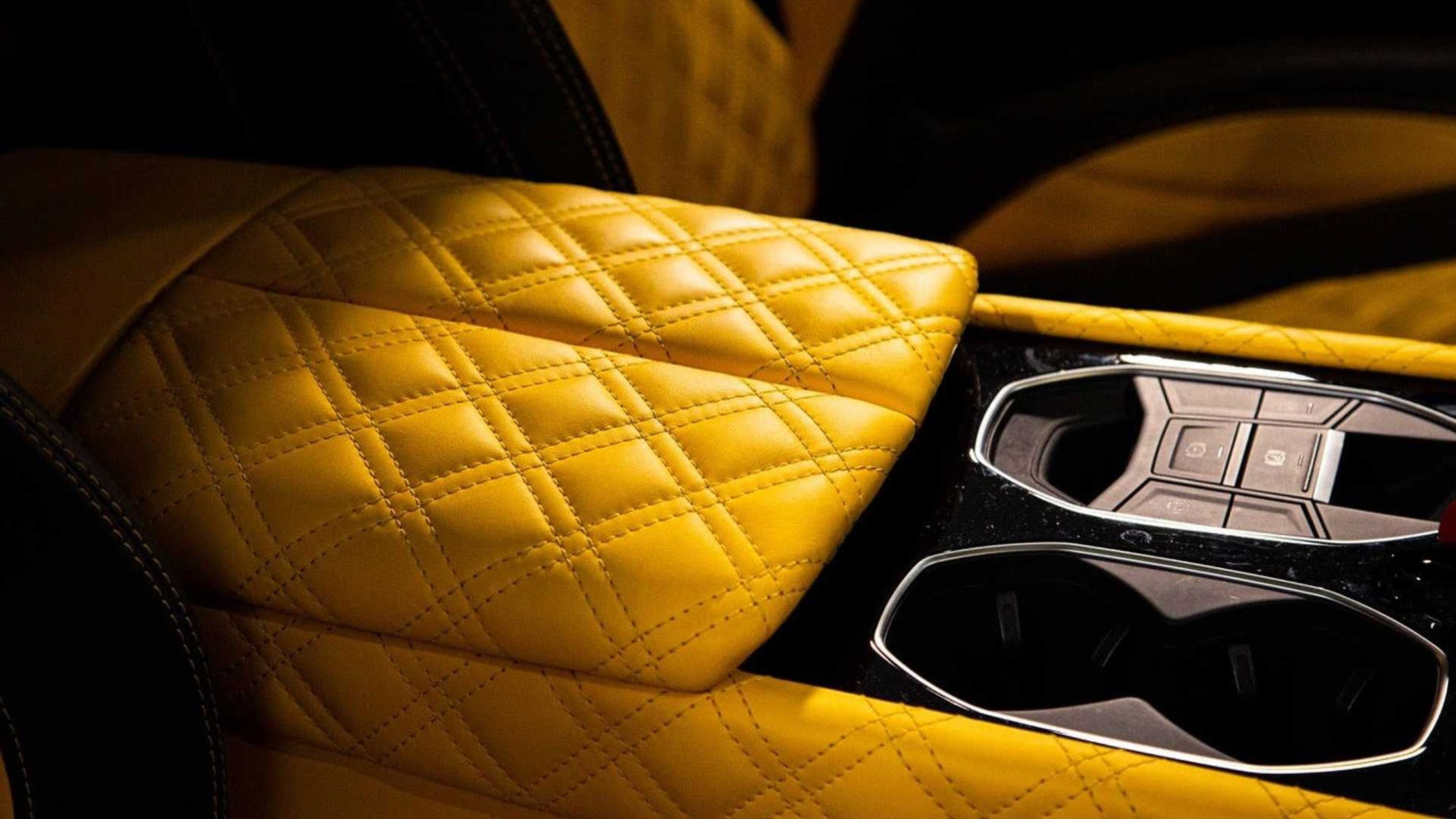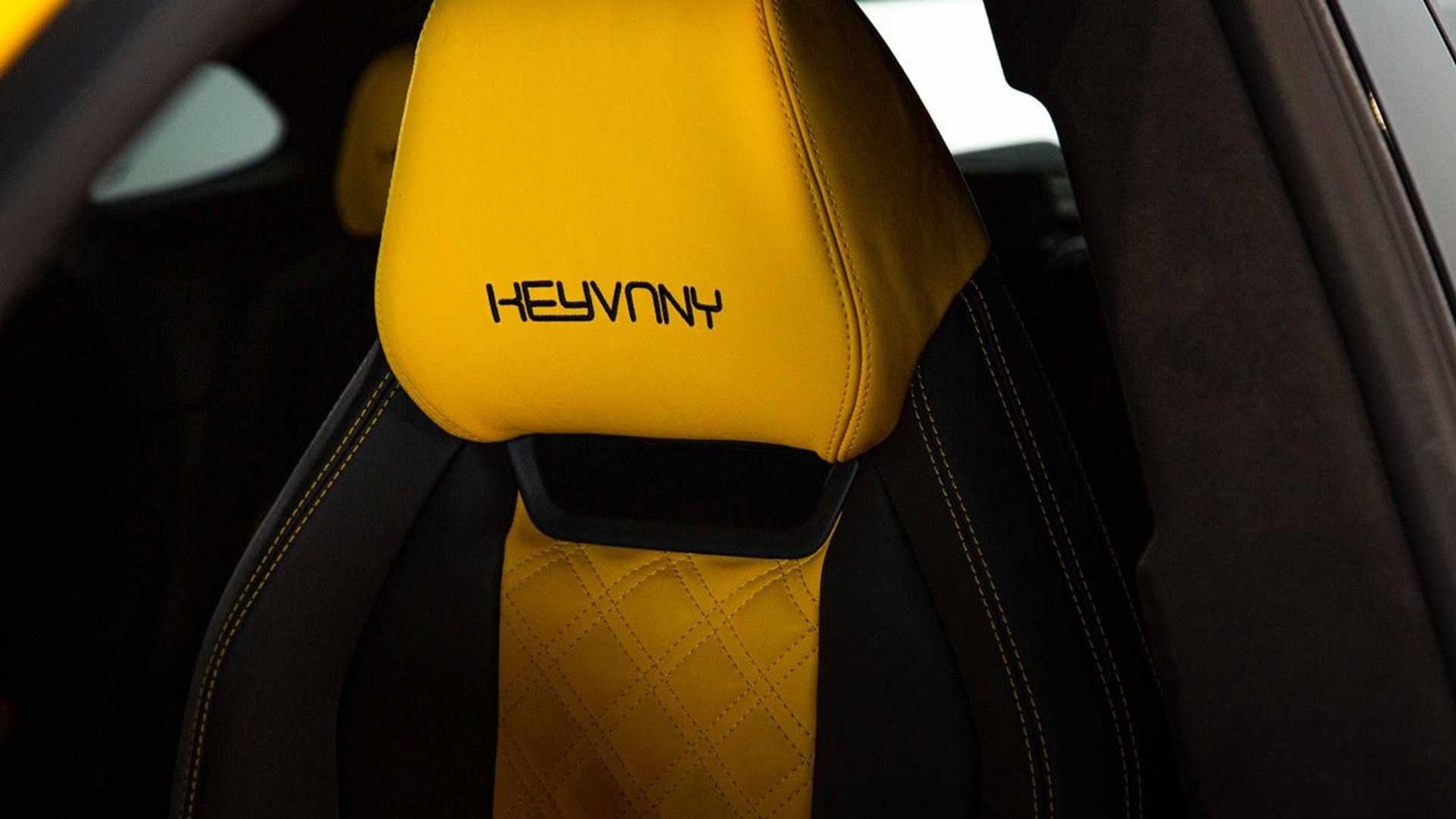This is the Lamborghini Urus, or at least it was until it turned into a Decepticon. All jokes aside, this heavily modified Urus is the proud work of Keyvany, a German tuner who apparently knows a thing or two about the Mansory way of vehicle modifications. One look at it and you’ll understand that reference. Keyvany’s tuning program for the Urus is excess personified. It’s loaded with enough carbon fiber parts and pieces to make other tuners blush. The kit also comes with a hefty engine upgrade that should delight the power-starved among us and a massive set of attention-grabbing wheels.
2021 Lamborghini Urus by Keyvany
- Make: Array
- Model: 2021 Lamborghini Urus by Keyvany
- [do not use] Vehicle Model: Array
Exterior Upgrades
Yes, this is a Lamborghini Urus, though you can be forgiven for thinking it’s a completely different SUV. No one can blame you. After all, it’s dripping in aftermarket carbon fiber, the type that automakers like Lamborghini like to leave out of their creations. From the hood, the wheel arches, and pretty much everything that you see in the front, there’s carbon fiber everywhere. Keyvany really did outdo itself this time, there is more to the tuner’s thinking than outright madness. See, carbon fiber is a lighter material than the steel and aluminum that Lamborghini used in building its super SUV.
Throw those pieces away, replace them with carbon fiber, and you’re left with a lighter SUV. How much, you ask? According to Keyvany, the front section is lighter by 34 kilos (75 pounds) while the rear section lost 41 kilos (90 pounds). The weight loss doesn’t sound like it’s a lot, but it is, especially when put in the context of the performance upgrades that Keyvany prepared for the mighty Urus. Before we dive into that, how about a hand to the German tuner for those massive air intakes and the extra — and larger — “Y” motif lights in the bumper. That’s a nice touch.
Interior Upgrades
I don’t suppose any of you will be shocked to know that the Lamborghini Urus, or “Keyrus,” as the tuner prefers to call it, comes with an interior that’s as outlandish as the exterior. There aren’t as many carbon fiber bits in the cabin of the Keyrus, but Lord have mercy, all that yellow leather is a feast for the eyes. From the seats to the central tunnel to the door trim, and yes, even dashboard stitching and the 12 o’clock strip on the steering wheel, it’s just yellow everywhere. Keyvany even gave some yellow lovin’ to the floor mats.
Everyone always forgets about the floor mats. It’s nice to know that the German tuner gave it the attention it deserves. Admittedly, this kind of interior setup isn’t for everyone. I showed it to my wife and she said it looked like a $200,000 super taxi. Vehicular stereotypes notwithstanding, I didn’t have a comeback for that. Then again, if you’ve made this far, there’s a good chance that you're on the side of the fence with all the ones who are, at the very least, intrigued by the Keyrus.
Mechanical Upgrades
In standard form, the Lamborghini Urus is powered by a 4.0-liter twin-turbocharged V-8 engine that produces 641 horsepower and 627 pound-feet of torque. The entire SUV has a curb weight of 2,200 kilos (4,850 pounds) so when you put all that together, the mighty Urus can accelerate from 0 to 60 mph in just 3.6 and hit the quarter-mile in 11.3 seconds at 120.1 mph. Its top speed sits at 190 mph, which is absurd for an SUV, let alone one that weighs as much as the Urus.
Here’s the thing, though. The Keyrus does not weigh 4,850 pounds, or at least it doesn’t anymore. Given the weight loss, the Keyvany-tuned Lamborghini SUV should be lighter on its feet, and that plays directly into the hands of the engine upgrades that were made to the Urus’ twin-turbo V-8. The tuner didn’t dive into the specifics, but we do know that a software tune to the V-8 was performed, as were improvements to the airflow in and around the SUV.
The result is a twin-turbo V-8 engine that now pumps out a staggering 820 horsepower and 811 pound-feet of torque.
Has Anyone Else Tuned the Urus?
Lamborhgini Urus Venatus by Mansory
You’re in good company if your tuning creation lines up best with that of Mansory, considered as one of the most famous aftermarket companies in the business. Back in March 2020, the German tuner presented the Venatus, arguably the raunchiest tuning program for the Urus that’s out in the market. We’re not going to dive deep into the exterior and interior bits — the photo speaks for itself — but we will note that the Venatrus isn’t all about style; there’s plenty of substance to go with it, too. A big part of Mansory’s Venatus program for the Urus is an engine upgrade program that adds a staggering amount of power to the Urus’ 4.0-liter twin-turbo V-8 engine. Thanks to a new engine management system, a sports rear silencer with downpipes, and a new high-performance catalytic converter, Mansory was able to raise the V-8’s output to 799 horsepower and 737 pound-feet of torque. The raised output results in a 0-to-60-mph time of 3.3 seconds and a new top speed of 205 mph.
Read our full review on the Lamborhgini Urus Venatus by Mansory
Lamborghini Urus HPE750 by Hennessey
From the outside, the Hennessy-tuned Lamborghini Urus doesn’t look different from the standard model. But there’s obviously more to the American tuner’s kit than meets the eye. Hennessey’s program for the Urus focuses squarely on the SUV’s V-8 engine, specifically an ECU tune-up that results in a raised output of 750 horsepower and 730 pound-feet of torque. Incredibly, Hennessey’s work on the Urus’ V-8 unit helps the SUV cut its 0-to-60-mph acceleration time to 2.65 seconds. That’s almost one second quicker to 60 mph than the standard Urus!
Read our full review on the Lamborghini Urus HPE750 by Hennessey
Final Thoughts
Personally, I’m the type who likes my tuning programs clean. Maybe it’s the minimalist in me, but too much of something in small spaces can be overwhelming. That’s the vibe I’m getting from the Lamborghini Keyrus. It’s an incredible piece of work from Keyvany, and I’m not going to begrudge anyone who looks at it and immediately falls head over heels for it. I understand that part, and if you want to spend over $500,000 for this conversion — Urus, included — then by all means. You won’t see your SUV for a month or two, but if the results are what you expect them to be, then go for it. I’ll be rooting from the sidelines.








